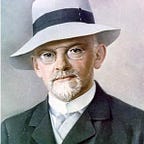Uniswap Voting Philosophy
As a Uniswap delegate, Gauntlet has a responsibility to explain its voting philosophy to provide transparency into our decision-making process. Given the breathtaking speed of DeFi and on-chain governance, these should be thought of as general principles rather than as static rules. As a Gauntlet delegate, stakeholders can have confidence we will do our utmost best to abide by these principles to make objective, quantitative decisions. We break down our beliefs into four principles that are focused on quantitative decision making on existing markets and evaluating future-looking improvements.
Provide strong insights into quantitative decisions
We spend the majority of our time quantitatively analyzing protocols and Gauntlet’s advantage is in picking numerical parameters. In Uniswap, the main parameters to set are issuance and fee-related. Given the proliferation of other specialized constant function market makers (CFMMs), it is clear that the analysis and optimization of fees will be important for future usage of Uniswap. This means that it becomes increasingly important for the market leading CFMM to have optimized parameters. For instance, economic and parameter missteps can lead to dangers to liquidity providers, as recently illustrated in a fee-related attack on Curve. We will provide as much statistical analysis as possible to ensure that these parameters meet the realized volatility of the traded assets and are competitive with other CFMMs.
Avoid non-quantitative votes
Not all governance decisions are quantitative. Gauntlet aims to elide ourselves from emotional and politically charged votes that do not readily admit quantitative analysis. However, as is the case with some early proposals, we will not always avoid such proposals where we may block quorum. We will aim to stick to precedent for these votes and avoid dramatic action that either harms liquidity providers or dramatically affects token distribution.
Protocols should invest heavily in forward-looking development
Over the last year, we’ve seen competition and innovation in AMMs ramp up dramatically. In this landscape, many decentralized protocols have failed to keep up with market changes by not investing heavily in forward-looking development.
Ongoing issuance is a powerful mechanism to incentivize development. We believe that Uniswap should invest significant resources into ecosystem growth, R&D, insurance, auditing, and security analysis. We see the following examples of protocol spend as crucial to the continued competitiveness of the protocol:
Ecosystem Growth
- Support diverse front-ends: Censorship resistant access to the protocol increases with a diverse set of front-ends that cannot be stopped by determined counterparties
- Integrations: Ethereum smart contracts that utilize Uniswap as an oracle or as a generator of valuable proof-carrying data will increase the protocol’s network effect ensure that decentralized price feeds are prominent in both Ethereum and on layer 2
- UX: Continue to build best-in-class UX for complex financial products within Uniswap. As future versions of the protocol may increase the mental overhead of liquidity providers, UX will become increasingly important
Research, Development, & Security
- Finding the Pareto Frontier: Uniswap can improve its optimization between capital efficiency and “impermanent” loss. Improving the protocol’s approach towards the optimal fee, which depends on the specific assets being traded is important to maintain competitiveness. We do not believe that the ‘decentralized Pareto frontier’ will be found with any ‘capital efficiency solution’ that involves adding an even partially centralized oracle to the protocol for marking LP share values.
- Embracing the coming complexity: Uniswap will grow in complexity as it supports advanced features that let liquidity providers have more control over their capital. This also means that the smart contract and economic auditing surface area grow dramatically. Ensuring that Uniswap governance adequately budgets for these audits to ensure that Uniswap is the safest constant function market maker is crucial for future success.
Support novel use-cases
Uniswap proved that a new mechanism — the constant function market maker — worked in practice better than prior attempts at automated market makers. The success of Uniswap has inspired several academic papers that illustrate how constant function market makers can be utilized for more than asset transfer. Other applications include:
- Prediction markets
- Options and finite-duration instrument market makers
- Complex payoffs found in less liquid portions of finance (e.g. CDS)
These applications, if successfully bootstrapped using Uniswap, could aggregate liquidity towards products that face technological hurdles that prevent them from being exchange tradeable. We believe that constant function market makers, combined with leverage mechanisms (e.g. Aave, Compound) can replicate virtually every bespoke constant, financial instrument, and derivative that an investment bank creates for customers. However, we believe that constant function market makers can replicate these instruments in a cheaper and more capital efficient manner, if there is a highly optimized swap operation that has large amounts of liquidity.
However, we also believe that such new use-cases should be supported in the safest and most reliable manner possible before having features added to the core protocol. The R&D and Auditing budgets of the protocol should cover these assessments before launch (e.g. no ‘test-in-prod’ new features should be allowed into the protocol).
